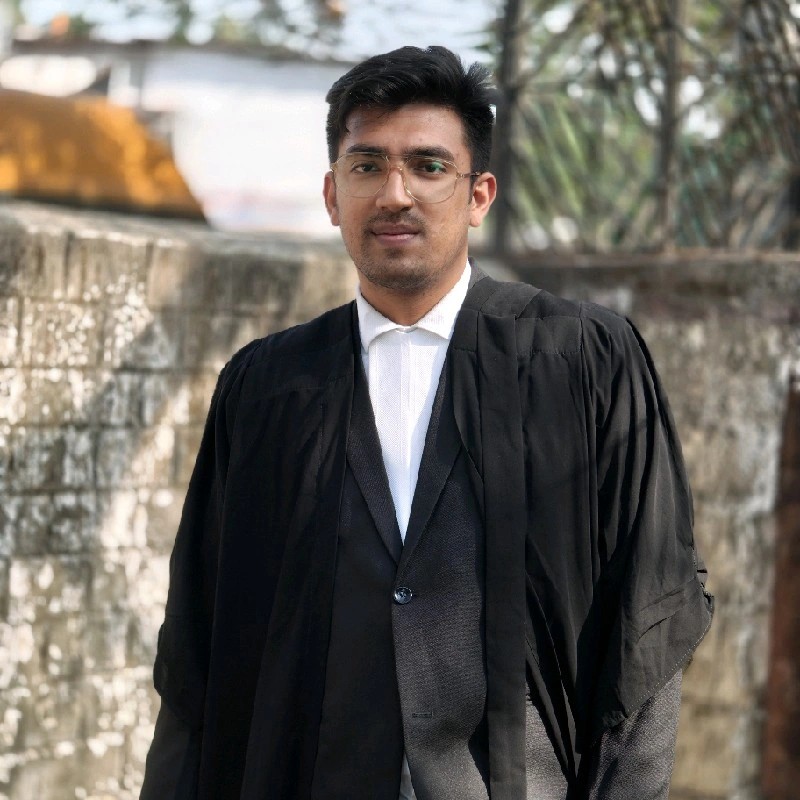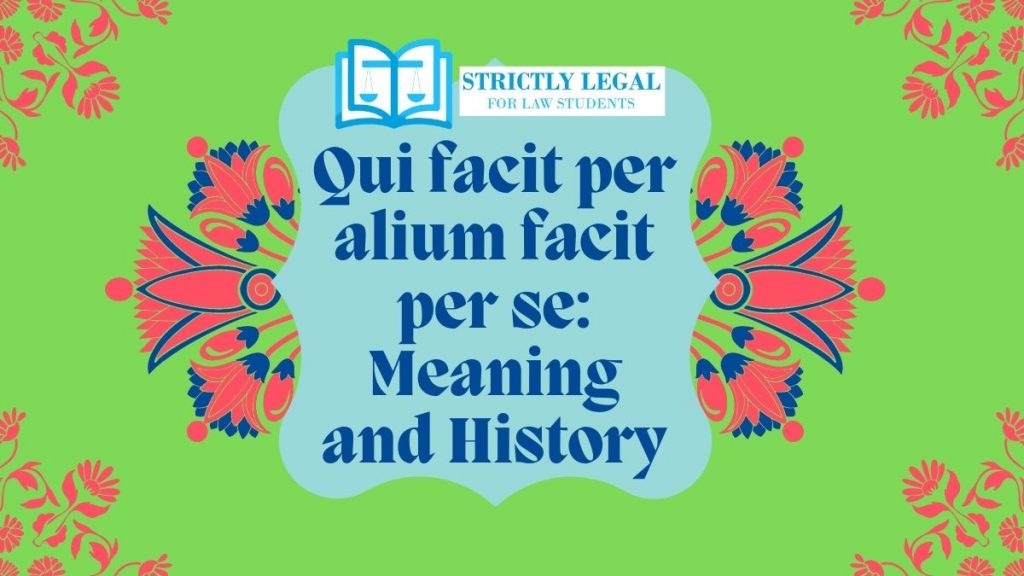Qui facit per alium facit per se is a Latin maxim that translates to, “He who acts through another is acting himself” This legal maxim is often used in the law of torts to expound on the law that the principle is liable for the acts of this agents in certain circumstances.
Table of Contents
Literal translation & History
The legal maxim ‘qui facit per alium facit per se’ meaning in english stands, “A principal or employer who appoints or authorizes an agent or employee to act for him will be bound by the acts of the agent or employee in the performance of his authority.”. This is a part of law of agency.
We can trace the development of this doctrine of vicarious liability through four definite stages.
- First is the period of complete liability before the abolition of slavery, when masters had to bear complete responsibility for the actions of their servants and slaves. Even in our land there was a period when the heads of high families were considered as the masters and patrons of large numbers of people who belonged to the depressed classes and were known as the Adiars for whose activities the masters were completely liable.
In England, in the early Anglo-Norman period, the idea was that a master was completely liable for the acts of his servants and slaves. - With the abolition of slavery we reach the next stage in the history of the doctrine in which a master is held liable only if he has commanded or agreed to a wrongful act of his servant. This change continued, so that until the early sixteenth century the command theory became fully established. This was the second stage.
- During the 16th and 17th centuries the master’s liability was considerably narrowed by the doctrine that he is not liable unless he particularly commanded the very act done. This may be called the third stage in the history of the doctrine.
- But this doctrine gave way between 1700 and 1800 A.D. to the rule that the master was liable if an implied command could be inferred from the general authority which he had given to the servant. This may be called the fourth rule.
The development of this doctrine qui facit per alium facit per se synchronised with the great industrial and commercial expansion of England throughout the world, founding new colonies and dominions and establishing trade relations there. Trade became so complicated and enlarged that the particular command theory was found too narrow and inadequate to cover the relations between masters at home and their agents situated far away from their homelands and who were unable to take specific orders from their masters at home. During the 19th century the implied command theory was displaced by the modern theory of ‘‘scope of employment’’ which have been stated at the outset.
Reason behind
A master is held liable for the acts of his servant this is because the master is in a better position to compensate for damages when compared to the servant’s position. In other words, it is a common law principle that there must be some remedy to a wrong and a widely accepted law that if there is any wrong it must be attributed to the master because he is in a position to compensate.
Other reasons being, the master sets the ball rolling, i.e he advances his economic interests and benefits from the servants’s acts.
Since, this is somewhat unfair on the face of it, this legal theory is not applied to criminal jurisprudence.
Meaning of qui facit per alium facit per se
This maxim is best understood with the help of the concept of vicarious liability. Generally, a person is responsible only for his own acts, however, in certain circumstance the law may hold accountable one person for the acts of the another and such is called vicarious liability. In other words, the wrongdoer himself is liable along with the master as he commands to do it. Because, the master by employing him sets the whole thing in motion.
Essentials to constitute an act under this maxim (also known as Respondent superior)
There are two essentials to constitute an act under this Latin maxim:
- It must be established that there is a relationship between the defendant and actual wrongdoer. And that the relationship is of a Master and servant.
- The wrongdoer has acted in the course of employment of his master.
Case law:
In State of Gujarat v. Govindbhai Jakhubhai, the plaintiff was a contractor. He was going to Himatnagar to purchase a kingpin for his truck. While he was passing by the Raigadh police outpost, he saw that his driver Devan Ruda was stopped and was being beaten by the police in the police station.
He walked inside the police station and begged that the driver not be beaten. Instead of listening to him, the police constable shot him in the right thigh with a shot from his loaded gun. Plaintiff’s son Hirji had the plaintiff hospitalised to a Himatnagar hospital.
He was then sent to Ahmedabad’s municipal hospital. The bullet wound did not heal, and his leg had to be sliced up to the knee, as per doctor’s recommendation. The plaintiff filed a lawsuit seeking Rs 26,000 in damages.
This sum includes lost wages, mental anguish, loss of pleasure of life, loss of earning capacity, and medical expenditures. The court noted that Respondent No. 2, a police constable, had unlawfully and without reason injured Respondent No. 1 with a bullet on April 22, 1976, when he arrived at the police outpost, resulting in the amputation of his right leg.
Because this tort was committed by a State employee, it amounted to a violation of Respondent No. 1’s fundamental right to life, as guaranteed by Article 21, triggering strict liability on the part of the State, which could be remedied by a civil court awarding compensation on the basis that the State is vicariously liable for such an act. Therefore, the court relied on the maxim qui facit per alium facit per se/

Passionate about using the law to make a difference in people’s lives. An Advocate by profession.




